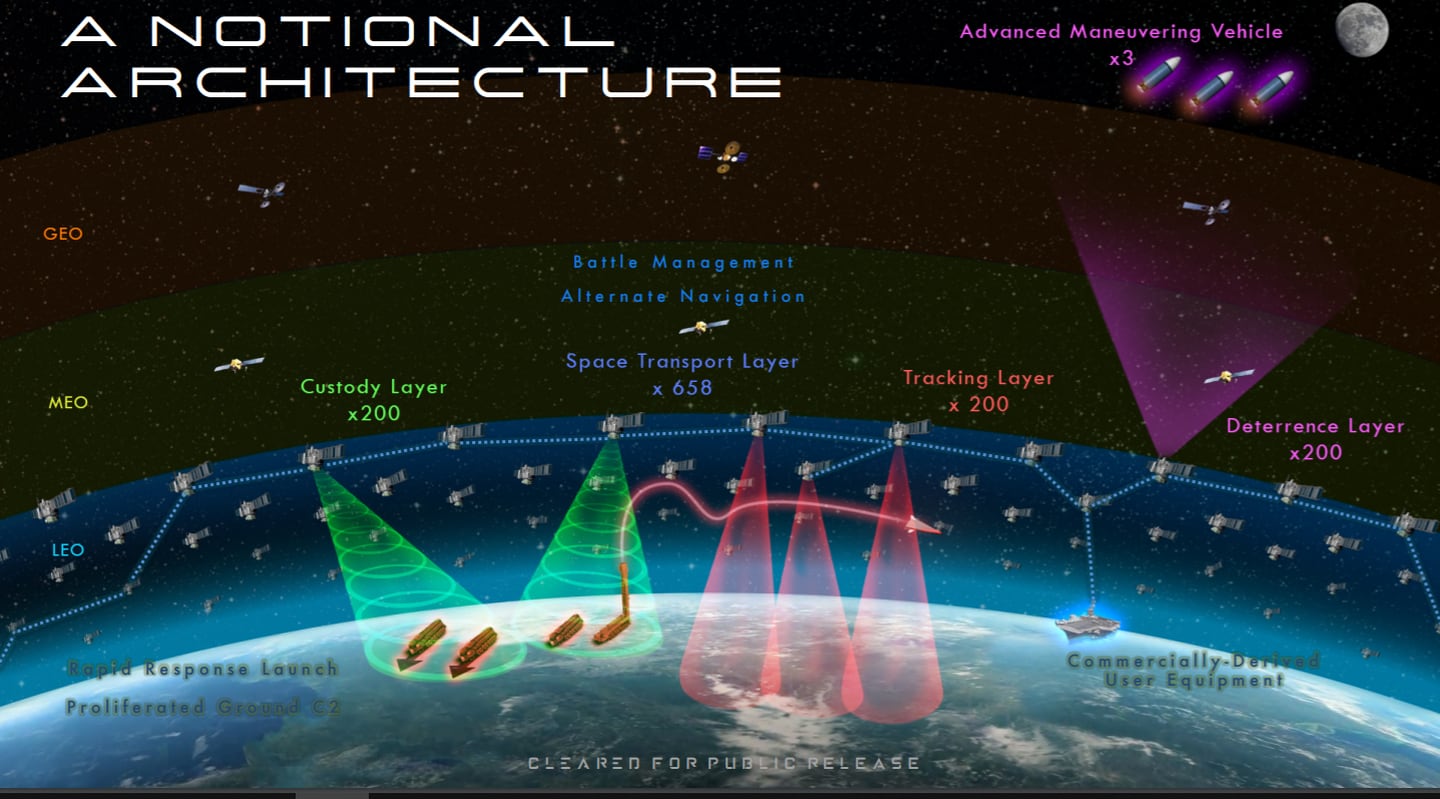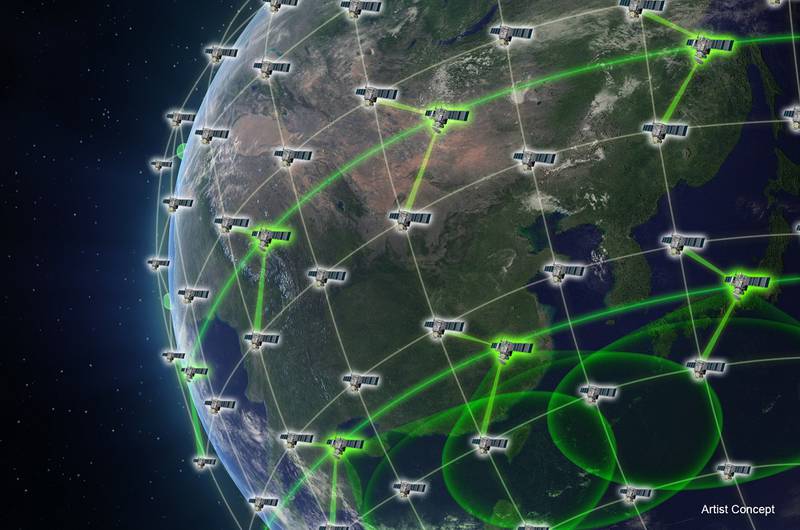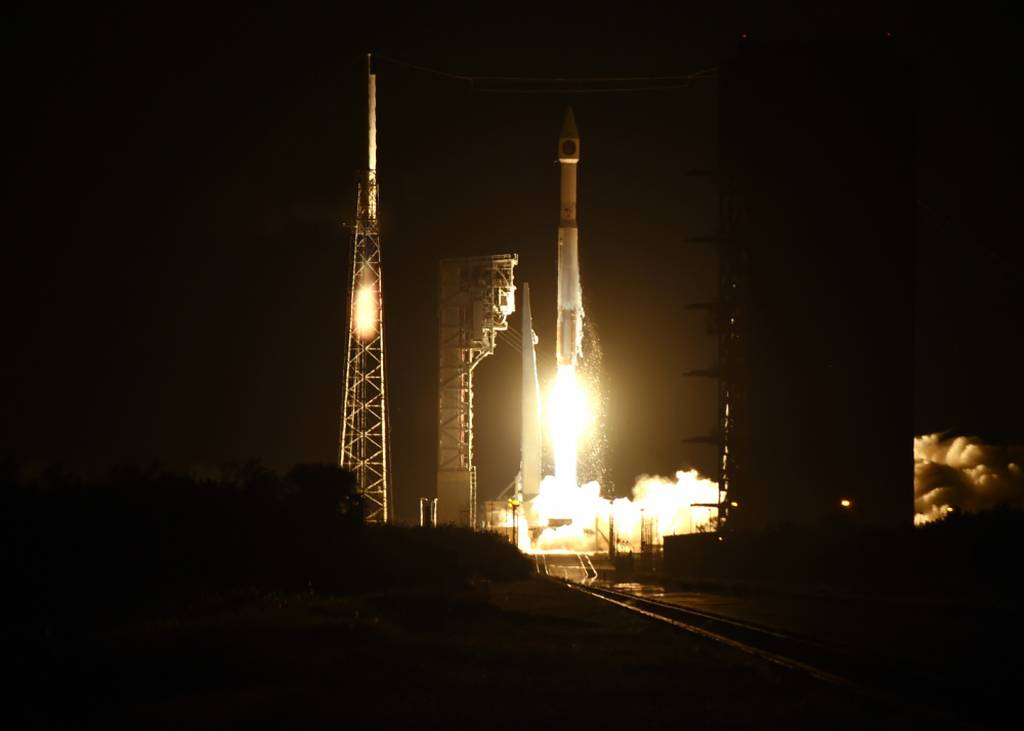The Space Development Agency wants to move fast.
The agency, which was established less than a year ago, wants dozens of satellites providing initial capabilities by fiscal year 2022 and nearly 1,000 satellites on orbit in fiscal year 2026.
It’s an aggressive timeline for an unprecedented new satellite system being orchestrated by a young agency, but Derek Tournear, the organization’s director, said his agency would deliver. When asked what would happen if they failed to achieve their lofty aims for 2022, Tournear told reporters at a Jan. 21 media roundtable, “I don’t understand the question. It does not compute. Of course we’ll be up by then!â€
That confidence might seem surprising, especially since a typical military satellite constellation might take 15 years from its first design work until its working on orbit, to say nothing of the fact that the SDA’s vision is unprecedented in its size and scope. But Tournear said the National Defense Space Architecture is substantially different than previous military satellite constellations and will rely on a different acquisition approach to build it out.
Most military satellite systems are comprised of just a handful of satellites operating in geosynchronous orbit. The Advanced Extremely High Frequency system which provides highly secure communications will be made up of six satellites in geostationary orbit. Likewise, the Next-Generation OPIR constellation that will provide early warning missile detection will be made up of five satellites—three in GEO and two providing polar coverage.
The SDA was established in March 2019 to take a new approach to building space-based capabilities. With a focus on smaller, cheaper, and more replaceable satellites, the organization envisioned a National Defense Space Architecture based on hundreds of satellites operating in low earth orbit instead of using a handful of exquisite, expensive satellites in GEO. The architecture will be comprised of multiple layers of satellites each providing a unique capability, from detecting and tracking hypersonic weapons to deterring aggressive actions in cislunar space to providing an alternative source of position, navigation and timing data.
Those layers will all be tied together by an on orbit mesh network provided by what’s been described as a transport layer.

To get there, the SDA plans to use a spiral model. Instead of waiting until the entire system with all of its capabilities is built and ready to launch, the agency will launch an initial “tranche†of dozens of satellites in fiscal 2022. Those satellites will provide a couple new capabilities initially, but importantly, they will also serve as prototypes for subsequent tranches of satellites.
“We have a completely different model for doing space acquisitions than the department has historically done. We’re going to fly new tranches every two years. Tranche 0 is the prototype for Tranche 1, which is the prototype for Tranche 2, etc.,†said Tournear. “We’re taking technology that is available to fly within 18-24 months, and that’s what we’re going to continue to do for each of the tranches.â€
RELATED

Every two years after that initial tranche, a new tranche of satellites will be placed on orbit, adding capabilities while growing the agency’s footprint in low earth orbit. In FY 2024, Tournear said the agency will have enough satellites on orbit to offer regional persistence. And by 2026, they will have full global coverage.
Because the initial satellites are anticipated to have a relatively short lifespan — approximately five years —earlier, less capable satellites will quickly be replaced by more advanced technology built on the lessons learned from those first tranches.
“The plan (following Tranche 0) is to build on the order of one satellite a week per layer and then launch those—so Tranche 1 would have several hundred satellites. The satellites are designed to last for five years, so you won’t replace all of the satellites on those two year tranches, but you’ll add new capabilities and then the satellites will be replenished basically in two and a half tranche cycles,†explained Tournear.
Tournear estimated the cost for each satellite to be in the $10 million range.
The first tranche will be made up of two kinds of satellites: transport layer satellites and tracking layer satellites. The transport layer will provide a mesh network to serve as the core of the architecture. Using optical intersatellite links, that network will not only connect the various layers of the architecture together on orbit, it will also provide a direct path from space-based sensor to the weapons systems and war fighters that need that information.
RELATED

The optical intersatellite links will also work with the tracking layer satellites, allowing them to pass data on through the transport layer. But those space vehicles will also feature Overhead Persistent Infrared sensors that can provide beyond line of sight targeting for war fighters. As Tournear explained previously, the transport layer will be able to deliver such targeting data provided by space-based sensors directly to weapons system through the Link-16 tactical data link or through the Army’s TITAN ground station.
In order to provide the targeting information right off the bat, the initial tranche will also take advantage of satellites operated by mission partners such as the Army Futures Command, even if they can’t directly feed into the transport layer on orbit. Instead, their sensing satellites will feed their data to a ground station which will then uplink it into the transport layer where it then can be fused with other data and disseminated to the appropriate war fighters or weapons systems. The goal is to cut out the middleman in future installments, with sensing satellites directly sharing their data with the Transport Layer on orbit.
Now the agency is focused on getting that first tranche of dozens of satellites on orbit by its 2022 due date. On Jan. 15, the agency released a broad agency announcement for developing an open standard for optical intersatellite links—a key technology enabling the entire proliferated constellation. And on Jan. 21, the SDA issued a broad agency announcement that will serve as an intellectual pipeline for any ideas or technology that could benefit the architecture.
The agency expects to issue solicitations for the Tranche 0 Transport Layer and Tracking Layer this spring, with contracts awarded as early as this summer.
Nathan Strout covers space, unmanned and intelligence systems for C4ISRNET.








